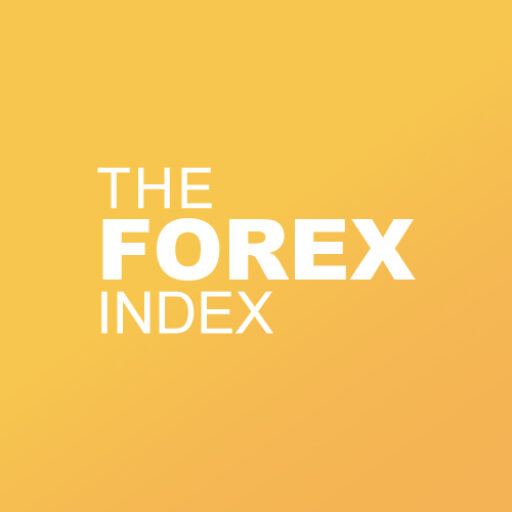Navigating the intricate world of forex trading can be challenging. With a multitude of factors influencing forex prices, it’s crucial to understand the tools that can give you the edge in this high-stakes game. One such tool is fundamental analysis. As a method of evaluating the intrinsic value of an investment, fundamental analysis plays a pivotal role in forex trading. This blog post will explore the concept of fundamental analysis in forex and the macroeconomic indicators’ impact on forex prices.
What is Fundamental Analysis in Forex Trading?
Fundamental analysis in forex trading is a method used by traders to assess a country’s economic situation and predict future movements in its currency. It involves evaluating economic indicators, political factors, and societal trends that may influence a country’s currency value. Traders use this analysis to make informed decisions, projecting whether a currency’s value will rise or fall.
The Importance of Macroeconomic Indicators in Forex
In the realm of forex trading, macroeconomic indicators are of paramount importance. These indicators provide insights into a country’s economic health and are key drivers of forex prices. The changes in these indicators often lead to fluctuations in currency values. From employment rates to GDP growth, inflation to interest rates, these metrics can have significant impacts on forex prices.
GDP (Gross Domestic Product)
The Gross Domestic Product (GDP) is a crucial macroeconomic indicator in forex trading. It represents the total value of all goods and services produced by a country during a specific period. As the primary measure of a nation’s economic health, changes in GDP can significantly impact forex prices. A growing GDP indicates a strong economy, likely leading to a rise in the currency’s value.
Employment Indicators
Employment indicators, such as the Unemployment Rate and Non-Farm Payroll, are essential in forex trading. A decrease in unemployment rates or a rise in non-farm payroll numbers can suggest economic growth, potentially leading to currency appreciation. Conversely, high unemployment rates might signal an economic downturn, which can depress a currency’s value.
Inflation Rates
Inflation rates are another essential macroeconomic indicator for forex traders. High inflation can devalue a currency as it erodes purchasing power, while low inflation can signal a sluggish economy. However, moderate inflation is usually a sign of a growing economy, which can increase a currency’s value.
Interest Rates
Central banks set interest rates, and these rates are critical for forex traders. When a country’s central bank raises interest rates, it often leads to a rise in that country’s currency value as investors seek higher returns. On the other hand, a reduction in interest rates can lead to a depreciation of the currency.
How to Use Macroeconomic Indicators in Forex Trading
Macroeconomic indicators can provide valuable insights, but it’s crucial to know how to interpret them. Traders should be aware of when these indicators are released, as they can cause market volatility. By following an economic calendar, traders can anticipate these movements and adjust their strategies accordingly.
Additionally, traders should not rely solely on one indicator. Instead, they should analyze several indicators together to form a comprehensive view of the economy’s health. This holistic approach will provide a more accurate prediction of potential currency movements.
Finally, traders should remember that fundamental analysis is just one tool in forex trading. It’s crucial to use it alongside other strategies, such as technical analysis, to maximize its effectiveness.
Incorporating Economic Reports and News Events in Forex Trading
News events and economic reports are pivotal in the world of forex trading. Economic data releases, Central Bank meetings, and geopolitical events often serve as catalysts for significant price movements. Here’s how these elements fit into the bigger picture:
Economic Data Releases
Economic data releases are among the most influential aspects of fundamental analysis in forex trading. These data releases reflect a wide range of economic indicators such as GDP, employment indicators, inflation rates, and more. A savvy forex trader pays close attention to these releases to predict future price movements. For instance, better-than-expected data could cause a currency to appreciate, while disappointing figures could lead to depreciation.
Central Bank Meetings
Central Bank meetings are another critical event that forex traders should monitor. During these meetings, decisions about interest rate changes, monetary policy shifts, and economic outlooks are made. These decisions can profoundly impact the value of a nation’s currency. Traders should keep an eye on meeting schedules and the statements that follow.
Geopolitical Events
Geopolitical events like elections, political unrest, trade disputes, or conflicts can cause drastic swings in forex prices. These events can shift investor sentiment and cause instability in the currency markets. Understanding the potential impact of these events can help traders anticipate and react to market volatility.
The Interplay of Macroeconomic Indicators
When conducting fundamental analysis in forex trading, it’s important to understand how different macroeconomic indicators interact. Often, the relationship between different indicators can provide valuable insights into the direction of forex prices.
For example, a combination of high GDP growth, low unemployment, and moderate inflation could suggest a healthy economy, leading to potential currency appreciation. Conversely, a mix of low GDP growth, high unemployment, and high inflation might indicate a struggling economy, potentially causing the currency to depreciate.
A Case Study: The USD/EUR Forex Pair
Let’s take a real-world example to understand how all this plays out in the forex market. Suppose you are trading the USD/EUR forex pair and are tracking macroeconomic indicators of both the US and the Eurozone.
If the US GDP is growing faster than the Eurozone’s GDP, and the US Federal Reserve increases interest rates due to fears of high inflation, the US Dollar could appreciate against the Euro. Conversely, if the Eurozone experiences higher employment rates compared to the US, and the European Central Bank decides to cut interest rates, the Euro could depreciate against the US Dollar.
This example highlights the importance of not just understanding individual macroeconomic indicators but also the relative differences between two economies when trading forex pairs.
The Bottom Line: Mastering Fundamental Analysis in Forex Trading
Mastering fundamental analysis in forex trading is no small task. It requires a thorough understanding of a variety of macroeconomic indicators and a constant awareness of global economic and geopolitical events. However, it’s an investment that can pay significant dividends.
By harnessing the power of fundamental analysis, you can anticipate market trends, manage risks effectively, and seize opportunities in the dynamic world of forex trading. Remember, the goal is not to predict the future with absolute certainty but to gauge potential scenarios and make informed decisions.
Now, with a robust understanding of fundamental analysis and its role in forex trading, you’re one step closer to navigating the forex market with confidence and expertise. The journey may be challenging, but with patience, dedication, and continuous learning, success is within your grasp.
Stay ahead of the game by keeping a close eye on economic indicators and staying attuned to the global economic landscape. Happy trading!
And that wraps up our comprehensive guide to fundamental analysis in forex. We hope it serves as a useful starting point on your forex trading journey, providing actionable insights and practical knowledge.
Wrapping Up
Fundamental analysis in forex trading offers traders an opportunity to understand the underlying forces that drive currency values. By using macroeconomic indicators, traders can gauge the health of an economy and predict potential changes in its currency value. These indicators are not foolproof, but when used effectively, they can provide valuable insights and improve trading strategies. Remember, success in forex trading involves not just understanding these tools, but also employing sound risk management and maintaining a disciplined trading approach.
Stay tuned to our blog for more insights into forex trading, tips, and strategies to help you navigate this exciting world. Happy trading!






